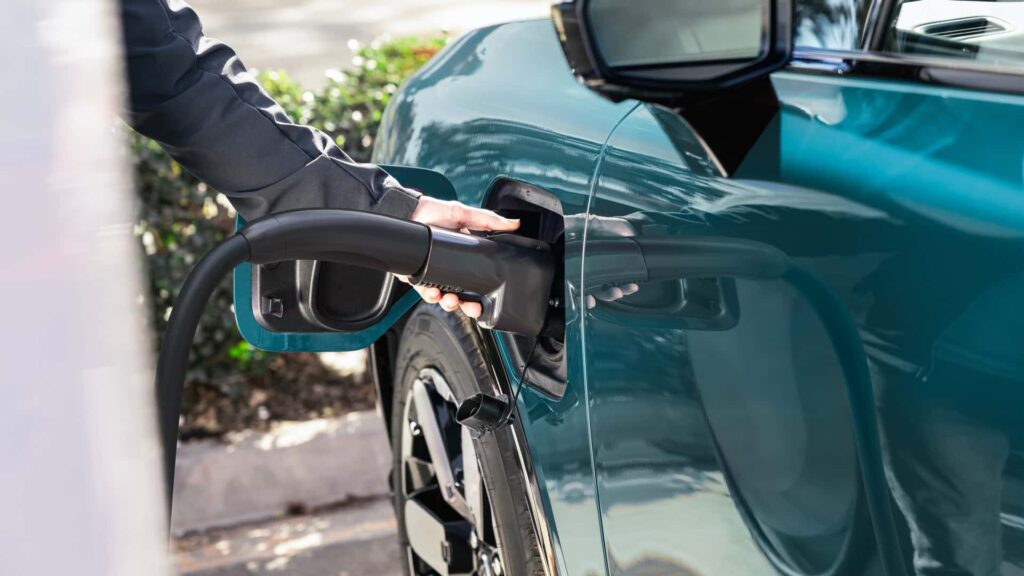
Electric vehicle (EV) fast chargers may contribute to air pollution in ways that many consumers are unaware of. A recent study from the University of California, Los Angeles (UCLA) reveals that the operation of these chargers can increase the concentration of harmful fine particles in the air by more than double the typical urban background levels.
The study, led by environmental health professor Yifang Zhu, focused on the air quality surrounding rapid EV chargers during operation. Researchers discovered that fine particulate matter, specifically PM 2.5, reached levels between 7.3 and 39 micrograms per cubic meter near these chargers. In comparison, urban California typically records PM 2.5 levels ranging from 3.6 to 12.4 micrograms per cubic meter.
Zhu noted the significant implications of these findings, stating, “There’s no healthy amount of fine particulate matter to breathe, and the amount around fast chargers for electric vehicles is about twice as high as background levels of PM 2.5.” The research analyzed 50 fast chargers across Los Angeles, with the highest levels of pollution detected near the chargers’ power cabinets.
Sources of Pollution Revealed
Interestingly, the particles detected near the chargers do not originate from the charging units themselves. Instead, they are stirred up by the powerful cooling fans used in the chargers, which create vortexes that lift settled particulate matter from the ground. This includes particles from brake and tire wear, as well as dirt and dust from various sources.
The study found that the average PM 2.5 levels around fast chargers were around 15 micrograms per cubic meter, with peaks reaching as high as 200 micrograms per cubic meter. For context, urban traffic sites in Los Angeles typically measure around 10 to 11 micrograms per cubic meter, while gas stations recorded levels approximately 12 micrograms per cubic meter.
Zhu emphasized the importance of maintaining distance from a DC fast charger while it is operational. “We measured at different distances from the chargers,” he explained. “The high measurements were taken at the chargers’ power cabinets. Fortunately, a few meters away, the concentrations drop quite a bit.”
Health Risks and Recommendations
The health implications of exposure to PM 2.5 particles are serious. Michael Jerrett from UCLA’s Fielding School of Public Health stated, “Exposure to fine particles can contribute to health issues, and for those with existing conditions or heightened sensitivity, the risks are even greater.” Due to their small size, these particles can penetrate deep into the lungs and may enter the bloodstream, potentially leading to severe health problems such as heart and lung disease.
For those who find themselves needing to stay near their vehicles while they charge, wearing a mask designed to filter out PM 2.5 particles can provide some protection. A properly fitting, high-quality mask can filter up to 95% of airborne particles, significantly reducing exposure.
The study utilized a sophisticated holographic particle monitoring device to measure air quality accurately. The researchers recommend that EV users take a few steps back from chargers in use, highlighting that even a short distance can greatly minimize exposure to harmful particles.
While the tailpipe emissions from electric vehicles are non-existent, leading to their classification as a more environmentally friendly option compared to gasoline-powered vehicles, this study serves as a reminder of the complexities surrounding air quality and pollution. As electric vehicle infrastructure continues to expand—California alone has 1,938 fast chargers in operation out of a total of 9,900 statewide—maintaining awareness of air quality risks becomes increasingly important.
In summary, while EVs represent a significant advancement in reducing emissions, users should be mindful of their surroundings while using fast chargers. By standing back and ensuring proper air quality, drivers can enjoy the benefits of emissions-free driving without compromising their health.







